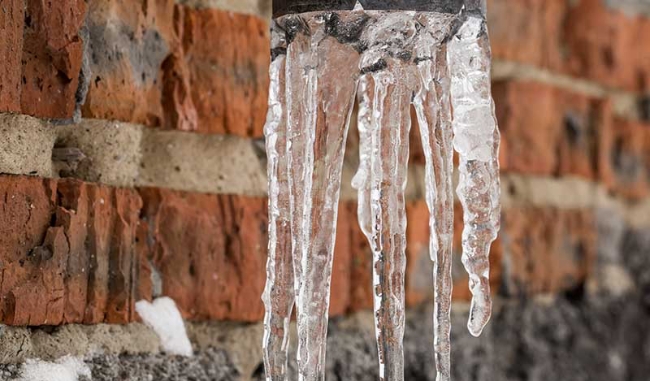We've uncovered this great article on Preventing and dealing with frozen pipes listed below on the net and figured it made sense to talk about it with you on this page.

Winter can damage your pipes, especially by freezing pipelines. Right here's exactly how to prevent it from taking place and what to do if it does.
Intro
As temperature levels decrease, the risk of frozen pipelines boosts, potentially resulting in costly fixings and water damages. Recognizing exactly how to prevent icy pipes is crucial for home owners in chilly climates.
Avoidance Tips
Insulating prone pipelines
Wrap pipelines in insulation sleeves or use warm tape to shield them from freezing temperatures. Concentrate on pipes in unheated or exterior locations of the home.
Home heating strategies
Maintain interior spaces effectively warmed, specifically locations with pipes. Open cupboard doors to enable warm air to distribute around pipes under sinks.
Exactly how to determine frozen pipes
Look for decreased water circulation from faucets, unusual smells or sounds from pipelines, and visible frost on exposed pipes.
Long-Term Solutions
Architectural changes
Think about rerouting pipelines far from outside wall surfaces or unheated areas. Include extra insulation to attics, cellars, and crawl spaces.
Upgrading insulation
Invest in high-quality insulation for pipes, attic rooms, and walls. Appropriate insulation aids keep constant temperature levels and decreases the risk of icy pipes.
Safeguarding Outdoor Pipes
Yard hoses and exterior faucets
Separate and drain yard hose pipes prior to winter season. Mount frost-proof spigots or cover outside taps with insulated caps.
Recognizing Frozen Pipes
What creates pipes to freeze?
Pipelines ice up when revealed to temperatures below 32 ° F (0 ° C) for prolonged durations. As water inside the pipes freezes, it broadens, taxing the pipeline wall surfaces and possibly causing them to break.
Risks and damages
Frozen pipes can result in water system disturbances, residential or commercial property damage, and expensive repair work. Ruptured pipes can flood homes and cause extensive architectural damages.
Indications of Frozen Pipeline
Identifying icy pipelines early can avoid them from bursting.
What to Do If Your Pipelines Freeze
Immediate activities to take
If you believe icy pipes, maintain faucets open to soothe stress as the ice melts. Make use of a hairdryer or towels taken in hot water to thaw pipes gradually.
Conclusion
Protecting against icy pipelines requires positive measures and fast actions. By comprehending the reasons, indications, and safety nets, home owners can safeguard their pipes during cold weather.
5 Ways to Prevent Frozen Pipes
Drain Outdoor Faucets and Disconnect Hoses
First, close the shut-off valve that controls the flow of water in the pipe to your outdoor faucet. Then, head outside to disconnect and drain your hose and open the outdoor faucet to allow the water to completely drain out of the line. Turn off the faucet when done. Finally, head back to the shut-off valve and drain the remaining water inside the pipe into a bucket or container. Additionally, if you have a home irrigation system, you should consider hiring an expert to clear the system of water each year.
Insulate Pipes
One of the best and most cost-effective methods for preventing frozen water pipes is to wrap your pipes with insulation. This is especially important for areas in your home that aren’t exposed to heat, such as an attic. We suggest using foam sleeves, which can typically be found at your local hardware store.
Keep Heat Running at 65
Your pipes are located inside your walls, and the temperature there is much colder than the rest of the house. To prevent your pipes from freezing, The Insurance Information Institute suggests that you keep your home heated to at least 65 degrees, even when traveling. You may want to invest in smart devices that can keep an eye on the temperature in your home while you’re away.
Leave Water Dripping
Moving water — even a small trickle — can prevent ice from forming inside your pipes. When freezing temps are imminent, start a drip of water from all faucets that serve exposed pipes. Leaving a few faucets running will also help relieve pressure inside the pipes and help prevent a rupture if the water inside freezes.
Open Cupboard Doors
Warm your kitchen and bathroom pipes by opening cupboards and vanities. You should also leave your interior doors ajar to help warm air circulate evenly throughout your home.

Do you like reading up on How To Avoid Freezing Pipes? Create a review below. We will be glad to listen to your ideas about this content. We are looking forward that you visit us again soon. For those who enjoyed our blog entry please make sure you remember to pass it around. Thank you for being here. Come back soon.
Rates